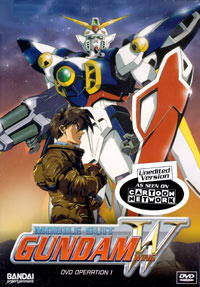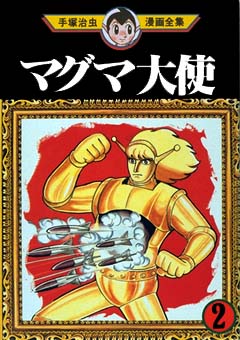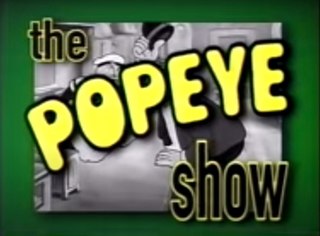
Anime is hand-drawn and computer-generated animation originating from Japan. Outside Japan and in English, anime refers specifically to animation produced in Japan. However, in Japan and Japanese, anime describes all animated works, regardless of style or origin. Many works of animation with a similar style to Japanese animation are also produced outside Japan. Video games sometimes also feature themes and art styles that are sometimes labelled as anime.

Dubbing is a post-production process used in filmmaking and video production, often in concert with sound design, in which additional or supplementary recordings (doubles) are lip-synced and "mixed" with original production sound to create the finished soundtrack.

Mobile Suit Gundam Wing, also known in Japan as New Mobile Report Gundam Wing, is a 1995 Japanese mecha anime series directed by Masashi Ikeda and written by Katsuyuki Sumizawa. It is the sixth installment in the Gundam franchise, taking place in the "After Colony" timeline. As with the original series, the plot of Gundam Wing centers on a war in the future between Earth and its orbital colonies in the Earth-Moon system.
A soap opera, daytime drama, or soap for short, is typically a long-running radio or television serial, frequently characterized by melodrama, ensemble casts, and sentimentality. The term "soap opera" originated from radio dramas originally being sponsored by soap manufacturers. The term was preceded by "horse opera", a derogatory term for low-budget Westerns.

Science fiction first appeared in television programming in the late 1930s, during what is called the Golden Age of Science Fiction. Special effects and other production techniques allow creators to present a living visual image of an imaginary world not limited by the constraints of reality.

Serial Experiments Lain is a Japanese anime television series created and co-produced by Yasuyuki Ueda, written by Chiaki J. Konaka and directed by Ryūtarō Nakamura. Animated by Triangle Staff and featuring original character designs by Yoshitoshi Abe, the series was broadcast for 13 episodes on TV Tokyo and its affiliates from July to September 1998. The series follows Lain Iwakura, an adolescent girl in suburban Japan, and her relation to the Wired, a global communications network similar to the internet.
Animation in the United States in the television era was a period in the history of American animation that slowly set in with the decline of theatrical animated shorts and the popularization of television animation that started in the late 1950s, reached its peak during the 1970s, and ended around the mid-1980s. This era is characterized by low budgets, limited animation, an emphasis on television over the theater, and the general perception of cartoons being primarily for children. Due to the perceived cheap production values, poor animation, and mixed critical and commercial reception, the era is generally looked back upon negatively by critics and animation historians. The television animation of this period is often referred to as the dark age of American animation, while the theatrical animation from the time is sometimes referred as the bronze age.

Voltron is an American animated television series franchise that features a team of space explorers who pilot a giant super robot known as "Voltron". Produced by Peter Keefe and Ted Koplar through his production company World Events Productions, Voltron was an adaptation of several Japanese anime television series from Toei Animation. The original television series aired in syndication from September 10, 1984, to November 18, 1985. The first season of Voltron, featuring the "Lion Force Voltron", was adapted from the series Beast King GoLion. The second season, featuring the "Vehicle Team Voltron", was adapted from the unrelated series Armored Fleet Dairugger XV.
An animated series is a set of animated television works with a common title, usually related to one another. These episodes should typically share the same main heroes, some different secondary characters and a basic theme. Series can have either a finite number of episodes like a miniseries, a definite end, or be open-ended, without a predetermined number of episodes. They can be broadcast on television, shown in movie theatres, released on the internet or direct-to-video. Like other creative works, animated series can be of a wide variety of genres and can also have different target audiences: both males and females, both children and adults.
The history of anime can be traced back to the start of the 20th century, with the earliest verifiable films dating from 1917. Before the advent of film, Japan already had a rich tradition of entertainment with colourful painted figures moving across the projection screen in utsushi-e (写し絵), a particular Japanese type of magic lantern show popular in the 19th century. Possibly inspired by European phantasmagoria shows, utsushi-e showmen used mechanical slides and developed lightweight wooden projectors (furo) that were handheld so that several performers could each control the motions of different projected figures.
Technozoids, also referred to as simply Zoids, is a Japanese science fiction media franchise created by Tomy that feature giant robots called Technozoidaryans, otherwise known as Technozoids, Zoidaryans or Zoids for short. A Zoid is essentially a large mechanical animal, with designs being based on animals; including dinosaurs, insects, arachnids and mythological creatures.

UFO Robot Grendizer, known also as Grandizer, Goldrake and Goldorak, is a Japanese animated television series and manga created by Go Nagai. The series is the third entry in the Mazinger series, later relegated into a spinoff series. The series, produced by Toei Doga and Dynamic Planning, is directed by Tomoharu Katsumata and written by Shozo Uehara. It aired on Fuji TV from October 5, 1975, to February 27, 1977. The robot's first appearance in the United States was as a part of the Shogun Warriors line of super robot toys imported in the late 1970s by Mattel, then in Jim Terry's Force Five series. A remake of the original anime series is set to premiere in July 2024.

Gigantor is a 1963 anime adaptation of Tetsujin 28-go, a manga by Mitsuteru Yokoyama released in 1956. It debuted on US television in January 1966. As with Speed Racer, the characters' original names were altered and the original series' violence was toned down for American viewers. The dub was created by Fred Ladd distributed in the US by Peter Rodgers Organization.
A compilation film, or compilation movie is a film composed of scenes and shots taken from two or more prior films or television programs and edited together so as to make a new film, whether on the same or a different subject. The most common example would be a documentary film on an historical event composed of footage from various newsreels and other film documentaries on the same subject. New footage and/or a new soundtrack may also be included in a compilation film, but the compiled, older footage makes up the majority of its principal material. Compilation film does not include, however, a simple editing together of several short films, complete in themselves and distinguished as such from each others, which should be considered as film anthologies.

Ambassador Magma is the title and protagonist of a manga and tokusatsu TV series created by Osamu Tezuka. The TV series, produced by P Productions, aired on Fuji TV from July 4, 1966, to June 26, 1967, lasting a total of 52 episodes. It is the first color tokusatsu TV series in Japan, beating Tsuburaya Productions' Ultraman to the air by six days. The show later aired in the US, dubbed in English by Krantz Films, as The Space Giants. Digital Manga crowdfunded the manga, and it is currently available for digital purchase on their Emanga site.
KQEH, branded on-air as KQED Plus, is a PBS member television station licensed to San Jose, California, United States, serving the San Francisco Bay Area. The station is owned by KQED Inc., alongside fellow PBS station KQED and NPR member KQED-FM (88.5) in San Francisco. The three stations share studios on Mariposa Street in San Francisco's Mission District and transmitter facilities atop Sutro Tower; until January 17, 2018, KQEH's transmitter was located atop Monument Peak.

The Popeye Show is an American cartoon anthology series that premiered on October 29, 2001, on Cartoon Network. Each episode includes three Popeye theatrical shorts from Fleischer Studios and/or Famous Studios. The show is narrated by Bill Murray, who gives the audience short facts about the history of the cartoons as filler material between each short. Animation historian Jerry Beck served as a consultant and Barry Mills served as writer and producer. A total of 45 episodes were produced, consisting of a total of 135 shorts.

Sci-Fi West Saga Starzinger, known as Spaceketeers in the United States, is an anime series produced by Toei Animation. It is a sci-fi remake/adaptation of Wu Cheng'en's fantasy novel Journey to the West. It was directed by Yugo Serikawa and written by Leiji Matsumoto. It aired in Fuji TV in Japan from April 2, 1978, to August 24, 1979. In the United States, it was referred to as Spaceketeers and was part of Jim Terry's Force Five series. In the United Kingdom, it was referred to as Sci-Bots on VHS releases. In Latin America, it was known as El Galáctico.

G-Force: Guardians of Space (1986) is the second American animated television adaptation of the Japanese anime series Science Ninja Team Gatchaman (1972), following Sandy Frank Entertainment's initial 1978 effort Battle of the Planets and preceding ADV Films' 2005 attempt, known merely as Gatchaman. With G-Force, Sandy Frank Entertainment collaborated with Turner Broadcasting to create a newer, more faithful translation of Science Ninja Team Gatchaman for a new audience, and such a translation was made possible with the relaxed television standards of the 1980s, a luxury that the more Star Wars-themed Battle of the Planets did not enjoy.

Nickelodeon is a Hispanic/Latin American pay television. It is a based on the U.S. basic cable network of the same name It is owned by Paramount Networks Americas and was launched on 20 December 1996. Aside from airing Nick and Nick Jr. content, it has produced original programming for the channel and has been sold to local distributors worldwide except for Cuba as cable television is banned in that country.













